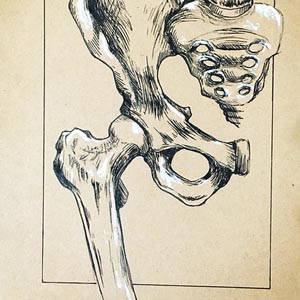Clinical and radiological results of using proximal femoral locking compression plate and proximal femoral nail antirotation for subtrochanteric fractures

Accepted: 24 February 2022
HTML: 5
All claims expressed in this article are solely those of the authors and do not necessarily represent those of their affiliated organizations, or those of the publisher, the editors and the reviewers. Any product that may be evaluated in this article or claim that may be made by its manufacturer is not guaranteed or endorsed by the publisher.
Authors
The aim of this study was to evaluate the results of treatment of subtrochanteric femoral fracture in the use of proximal femoral locking compression plate (PFLCP) and proximal femoral nail antirotation (PFNA). This retrospective study was performed on patients who referred to Firoozgar Hospital in 2017 with subtrochanteric fracture. During follow-up, control radiographs were obtained from patients and the Harris Hip Score questionnaire was completed. Finally, the data were entered into Spss version 22 and then analyzed. A total of 56 patients were included in the study. Patients were divided into two treatment groups of 28: including groups with locking plate and nailing treatment. The results showed that the treatment was not significantly different in patients with subtrochanteric fractures who were treated with either intramedullary nailing or plate placement. There is no difference between the two groups in any of the parameters. The two groups were similar in terms of fracture classification, and finally no significant difference was found in terms of union findings. This study showed that clinical and imaging findings are not significantly different between the two groups of patients with subtrochanteric fracture who are treated with nailing or plate placement.
How to Cite
PAGEPress has chosen to apply the Creative Commons Attribution NonCommercial 4.0 International License (CC BY-NC 4.0) to all manuscripts to be published.

 https://doi.org/10.4081/ejtm.2022.10422
https://doi.org/10.4081/ejtm.2022.10422



